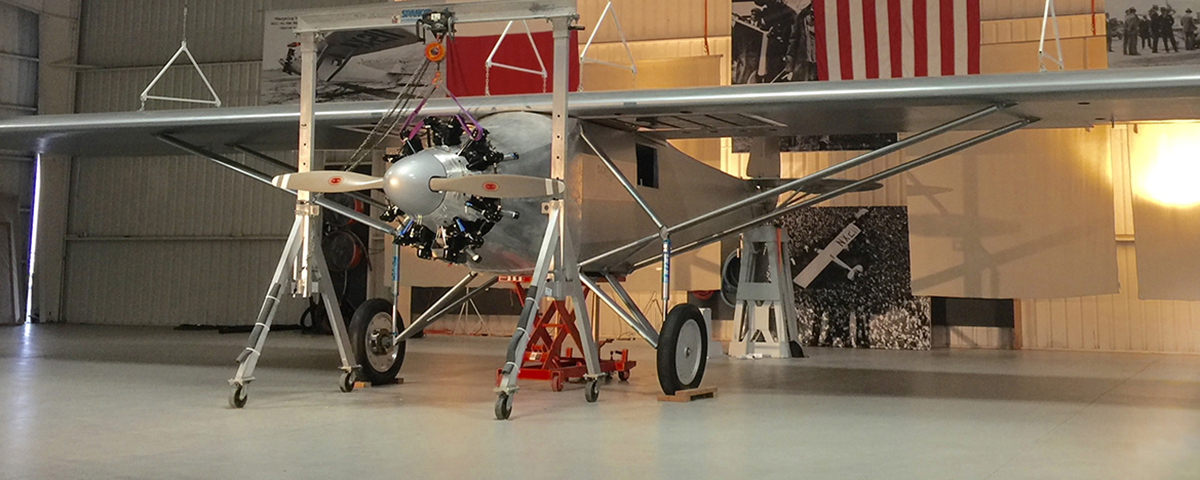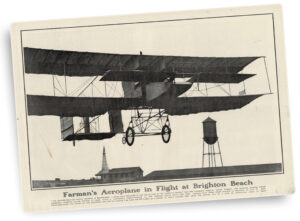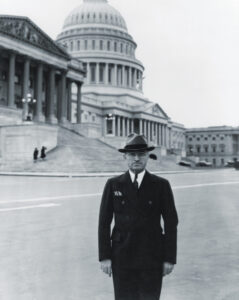When last we checked on Robert Ragozzino, his Spirit of St. Louis 2 project was pulling up stakes at Gnoss Field in Northern California and heading back to Mustang Field in Oklahoma. The project had lost its lease on its 8,000-square-foot hangar, but Ragozzino was hoping to partner with a skilled Colorado supplier to complete his scratch-built replica of Charles Lindbergh’s historic aircraft.
What once looked like a setback has turned out to have positive consequences. After Ragozzino made four trips with a semi-trailer to Oklahoma hauling the Spirit, as he calls the airplane, the story has taken a surprising turn. He has since returned to Gnoss Field, where he’s settled into a new hangar, determined to finish the job.
The project achieved an important milestone when Ragozzino completed a successful taxi test last October, following a successful engine test earlier in the year. Next up: the aircraft’s first flight test, scheduled for Edwards Air Force Base in March. Ragozzino plans to fly the replica to Paris on June 20, 2019.
Ragozzino’s two-person operation—including his right-hand man, Antony Giacomini—has had its fair share of bumps along the way. After he finished his record-setting around-the-world flight in a Super 450 Stearman biplane, Ragozzino took over the Spirit of St. Louis 2 project in 2001. Fundraising wasn’t complete, though, until 2014. Nevertheless, Ragozzino has spent every waking minute trying to re-create Lindbergh’s record-setting aircraft, despite myriad frustrations.
Sleeping in an unheated hangar one-third the size of his previous one crammed to the rafters with everything necessary to finish the project, Ragozzino remains undeterred. “I’ve been working at this for 18 years,” he says, his tall, wiry frame dressed in a tan mechanic’s jumpsuit, a baseball cap jammed upon his graying head, a week’s growth of whiskers spackling his face.
Still, it’s a lonely pursuit lacking in major sponsors or big-time media attention. “This is the most replicated plane of its kind,” Ragozzino says by way of explanation.
Approximately a dozen Spirit of St. Louis replicas or reproductions have been built, though none have flown to Paris. Ragozzino knows most of the owners, and is in regular contact swapping stories about how to best get the work done.
In the meantime, the 60-year-old pilot’s all-night scavenger hunts continue as he scours online sites for just the right bolt plate. Whether he finds what he’s looking for often depends on “Who has the inventory but don’t know what they’ve got.”
When Ragozzino finds something he needs, he’ll buy the whole lot from a surprised seller—that’s how hard it is to find the necessary parts to complete the project. “If a Spitfire needs a part, someone takes a photo, posts it online, and finds it,” he says. But it’s not the same when building a historic aircraft like Spirit of St. Louis because most of its plans (not to mention parts) have long since vanished.
Right now, the most vexing part is the carburetor’s heat exchanger, which Ragozzino has repeatedly sent out to be milled. He’s still not satisfied with the work, one of the reasons he returned to California rather than remain in Oklahoma.
It’s clear the working relationship between Ragozzino and Giacomini is tight. As they argue good-naturedly over the diameter of a hole in the engine cowling, Ragozzino praises Giacomini’s skills and temperament.
“If we had four Tonys we’d be done.” he says.
As a small gathering of investors and bystanders wielding cellphone cameras looked on, Spirit of St. Louis 2 taxied across the tarmac at Gnoss Field in late October. The plane’s Jacobs radial engine gave off a satisfying thrum, its propeller a silver blur in the California sunlight.
“This has been a monumental undertaking since its inception,” says Spiros Bouras, president of business development for the project. “To see this living, fire-breathing beauty taxi under its own power…after so many years was very moving.”
If Ragozzino’s sticks to his announced departure date, it will mark the 92nd anniversary (plus one month) of Lindbergh’s historic flight. But the date has slipped before. Then again, the aircraft has never been this close to completion.
“The struggle to build the Spirit has been unbelievable,” Ragozzino says, adding the process, “ain’t no cakewalk.”
Nevertheless, he remains bullish. “We have to bet our life it will work.”
Lindbergh once called such risks, “Sharpening the blade of skill on the stone of danger.” After 34 years as a professional pilot, Robert Ragozzino is confident he’s ready.
For additional information and updates about the project visit: spiritofstlouis2.com





